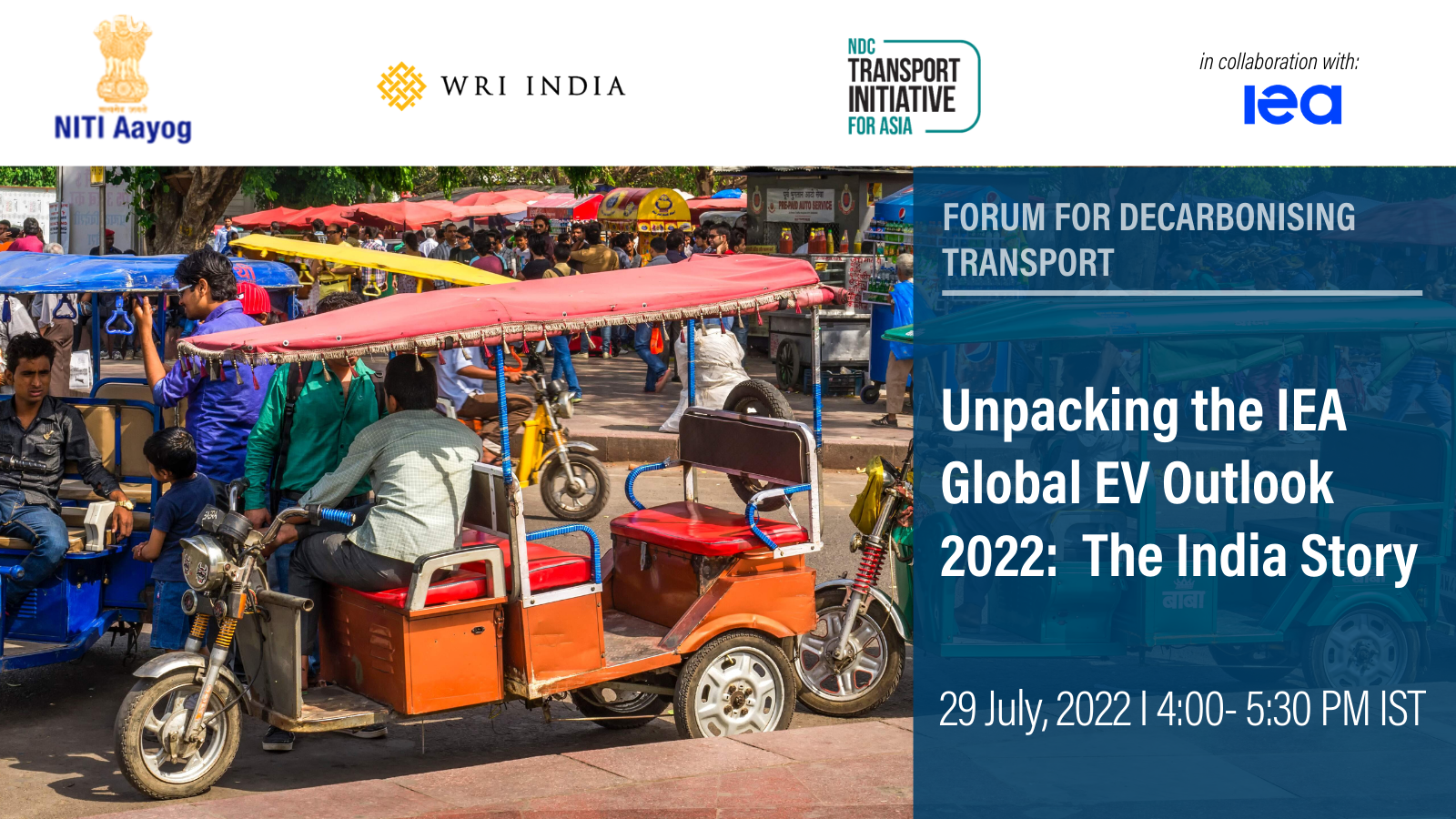4:00 PM to 5:30 PM

India had over one million electric vehicles (EVs) on the road at the end of 2021, most of which were electric two and three-wheelers (e-2ws/e-3ws). After a COVID-induced slump, India’s EV sales doubled in 2021 with further gains in the first quarter of 2022– indicating a promising growth trajectory over the next decade provided that conducive policies and investments in electric mobility continue. Additionally, India plans to procure 50,000 electric buses by 2030 – which will potentially catapult the country into one of the world’s largest markets for electric buses.
The IEA Global EV Outlook 2022, the International Energy Agency’s (IEA) flagship annual publication, highlights some of the key advances and remaining challenges in India’s ambitious trajectory to become a global leader in the sector.
To deliberate on the upcoming trends and developments in India’s EV industry, the ‘Forum for Decarbonising Transport’ (an initiative of NITI Aayog and WRI India), in collaboration with the International Energy Agency (IEA) is conducting a webinar on ‘Unpacking the IEA Global EV Outlook 2022: The India Story’ under the NDC-Transport Initiative for Asia.
The webinar brings together government, industry leaders and EV experts to highlight the key findings of IEA’s annual Global EV Outlook, and to discuss some of the advances and challenges in India’s ambitious trajectory to become a global leader in the sector.
The webinar aims to shed light on the following aspects of India’s EV transition:
- What are the roadblocks to achieving India’s target of 30% EV sales by 2030?
- How can India strengthen its local manufacturing capabilities?
- How can the policy landscape be improved to catalyze EV adoption?
- What partnerships are needed to optimally tap the growing market opportunities?
- What are the key developments expected over the next year?
SPEAKERS
- Sudhendu Sinha, Adviser (Infrastructure Connectivity – Transport and Electric Mobility)
- Randheer Singh, Director-Electric Mobility, NITI Aayog
- Dr. Elizabeth Connelly, Energy Technology and Transport Analyst, IEA
- Mahesh Babu, CEO, Switch Mobility
- Vivekananda Hallekere, CEO & Co-Founder, Bounce
- Dr. Prabhjot Kaur, Co-Founder & CEO, Esmito Solutions
- Dattatreya Gaur, MD and CEO at Bosch Global Software Technologies
- Araceli Fernandez Pales, Head of Technology Innovation Unit, IEA
- Madhav Pai, Executive Director, WRI India Ross Center
- Pawan Mulukutla, Director, Integrated Transport, Electric Mobility and Hydrogen, WRI India
